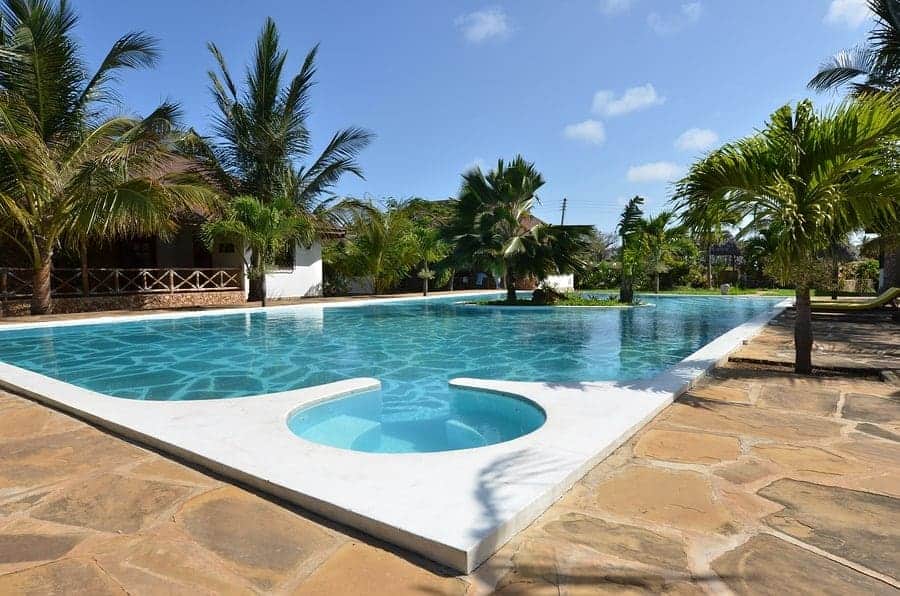
It might happen in the early stages of planning a new swimming pool, or years after it’s been built. But sooner or later, the issue of hot tubs rears its bubbly head.
The first question that often bubbles to the surface is, what’s the difference between a hot tub and a spa? As far as this article and most non-industry professionals are concerned, there is none. However, you might want to be aware that for some people, the words mean different things.
Semantics aside, a more important question for many homeowners is whether to get an inground hot tub or above ground hot tub. And for that matter, does a hot tub (or spa) even make sense for your situation? Here’s an overview of the differences to help you sort through this “hot” topic.
Inground Hot Tubs
An inground hot tub is a lot like an inground swimming pool, and has many of the same advantages and drawbacks. As with inground pools, they have a lower profile that blends easily into almost any setting. Rather than cluttering up your property, they can actually improve it in the same way a small pond or other water feature would.
On the downside, inground hot tubs are more expensive to install and maintain. Installation cost varies a lot depending on the materials used and many other factors, but you can expect to pay a minimum of $10,000 – and perhaps much more. That said, adding a spa to a new pool installation is often cheaper than installing one on its own or as part of a renovation.
Inground spas also come with a lot of the same safety and liability issues as inground pools. This may not be a big concern if you already have an inground pool, or are planning one. However, for those who are thinking about a standalone hot tub, it’s important to look into your local laws and figure out the implications of an inground installation.
Above Ground Hot Tubs
An above ground hot tub offers all the same health and relaxation benefits as its inground counterparts – but at a much lower cost. Excluding the cheaper portable models (which can cost less than $1000), above ground spas generally cost somewhere in the range of $3000-8000. Having said that, swim spas and other high-end options can cost much more than that.
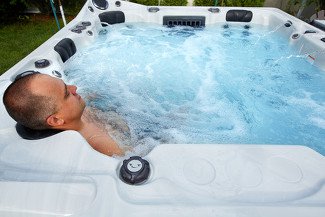
Besides cost, the other major advantage of above ground hot tubs is that they’re pretty hassle free. You can install them on any level surface, and – at least theoretically – move them to a different location later on. Installation is comparatively quick, and because they’re temporary structures, it’s unlikely you’ll find yourself butting up against local building codes.
The tradeoff is that above ground hot tubs or spas generally don’t add a lot of visual appeal to your backyard. In fact, deciding on placement is often about finding an out-of-the-way location (that’s still convenient to access).
So, What’s the Best Hot Tub to Get?
As usual, the right choice depends on your unique circumstances. Yes, your budget is a big factor, but it’s not the only factor. Here are some of the most common situations people face, and how they impact the decision on what type of hot tub to get:
New Pool Installation. As mentioned, adding an inground spa becomes more cost-effective if you’re already having a new pool installed. The same crew that installs your pool can also install the spa as part of a single project. The pool and hot tub may also be able to share things like heating, plumbing, and safety features.
Existing Pool. If you have an older pool that needs freshening up, adding an attached spa is one (very expensive) way to renovate. However, if you’re just looking to add luxury and fun, an above ground hot tub might make more sense. It’s cheaper and offers more options for placement.
Standalone Hot Tub. If you don’t already have an inground pool and aren’t planning one, getting an inground spa may expose you to a lot of complications normally associated with pool ownership (safety laws, permits, etc). On the other hand, the price of an inground hot tub is attractive if you view it as an alternative to building a pool. When not constrained by an existing pool layout, another great option is to build an above ground spa into a deck.
Cold Weather. If you plan to use your hot tub in cooler weather, you’ll probably want it close to the house (unless you like tiptoeing around in your swimsuit when it’s cold outside). Depending on the layout of your backyard, this may dictate an above ground spa that you can place near a backdoor.
Indoor Hot Tub. If you’re planning an indoor hot tub, the above ground/inground question is less important than issues of placement and ventilation. To get an idea of what’s involved, see our article on indoor pools.


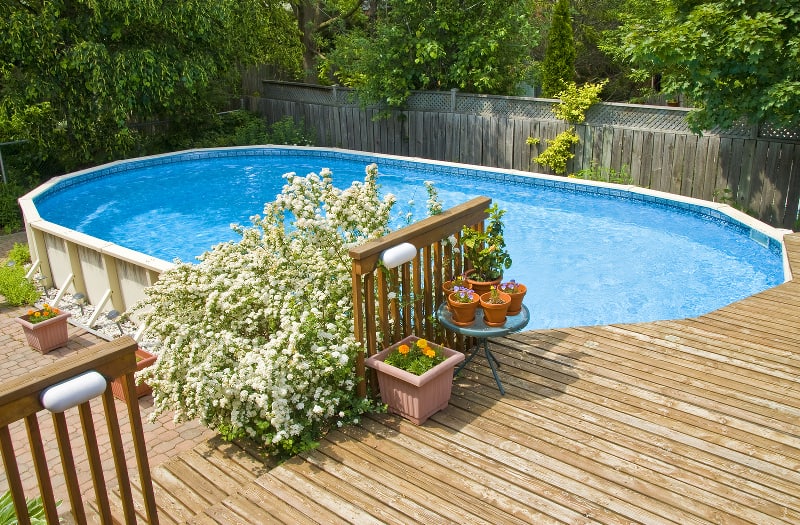
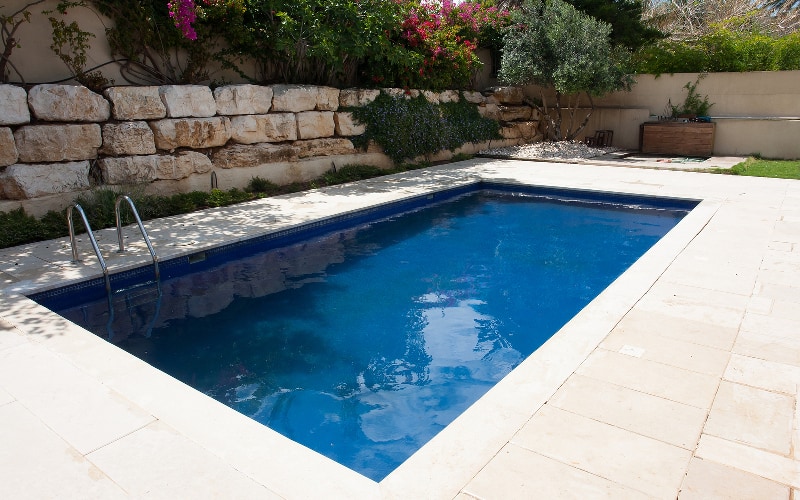


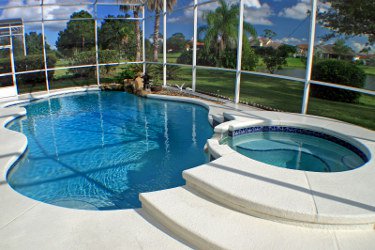
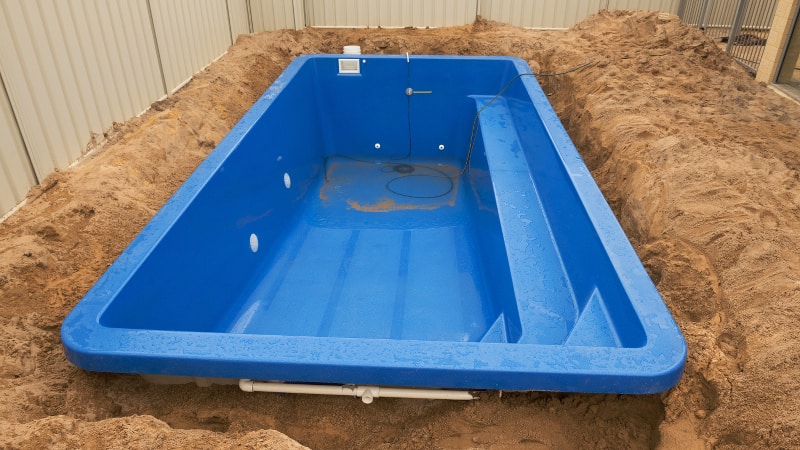
Why no discussion of setting an above-ground tub below grade? I’ve seen lots of photos of those with built-in access points for various elements that need maintenance. In fact, looks like there’s a company out there that actually builds “vaults” with instructions that are made to fit the many diff types/styles/shapes of plastic tubs. Best of both worlds.